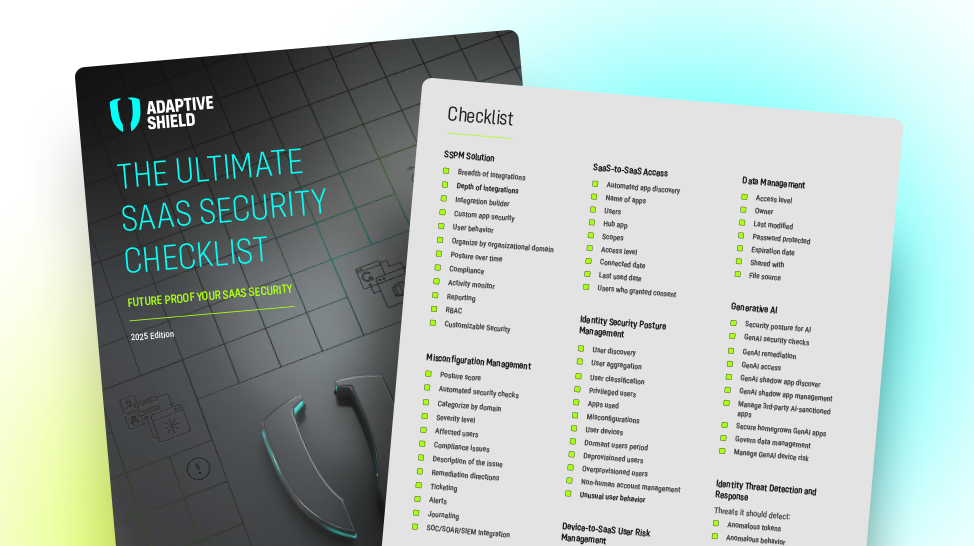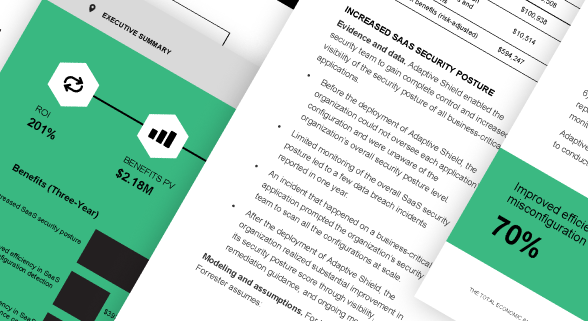The SaaS (Software as a Service) attack surface refers to the various points and areas within a SaaS application that could be susceptible to security threats and attacks. It encompasses all the potential entry points, vulnerabilities, and weaknesses that attackers could exploit to compromise the security of the SaaS system. SaaS security tools and platforms focus on reducing the size of the attack surface to protect against the application being breached.
How do Misconfigurations Expand the SaaS Attack Surface?
Misconfigurations significantly contribute to the expansion of the SaaS attack surface by introducing vulnerabilities that can be exploited by malicious actors. Improperly configured access controls or storage permissions can inadvertently expose sensitive data or provide unauthorized access to resources.
Furthermore, misconfigurations often extend to the management of authentication and authorization mechanisms within the SaaS environment. Weaknesses in identity and access management settings can result in unauthorized users gaining entry or legitimate users obtaining excessive privileges. This mismanagement can compromise the confidentiality and integrity of user data, as well as lead to potential disruptions in service.
What are the risks to a SaaS app brought on by third-party integrated applications?
Integrating third-party applications into a SaaS environment introduces a set of risks that demand careful consideration. The potential compromise of user data poses a significant threat, especially when third-party providers fail to adhere to the same data protection and privacy standards as the SaaS platform, leading to compliance violations and legal implications.
Another critical risk in the context of third-party integrations with SaaS applications is the potential for users to unwittingly grant high permission scopes to these external applications. Users may grant extensive access without fully understanding the implications, particularly when prompted to authorize the integration. This lack of awareness can result in applications having broader access privileges than necessary, posing a serious security threat. High permission scopes granted to third-party apps may lead to unauthorized access, data exposure, or misuse of sensitive functionalities.
Do users expand the attack surface of a SaaS application?
Users can actively contribute to the expansion of the attack surface of a SaaS application in several ways, including through weak authentication practices and poor password hygiene. Instances of users adopting weak passwords, reusing credentials across various platforms, or falling prey to phishing attacks can lead to compromised accounts, thereby jeopardizing the overall security of the SaaS application. Furthermore, the tendency for users to utilize the same credentials across multiple services can introduce potential vulnerabilities, creating opportunities for unauthorized individuals to gain entry.
Users with permission sets beyond their needs expand the attack surface, as those accounts may be compromised and unnecessarily expose more data than necessary. Former employees and former external partners who haven’t been fully deprovisioned from an application also add to the attack surface, as their accounts can be used to breach the application.
Should organizations be concerned about devices used to access their SaaS applications?
Organizations should be concerned about the devices being used to access their SaaS applications. The proliferation of diverse devices within the modern workplace, including personal computers, smartphones, and tablets, introduces a range of security challenges. These challenges stem from varying device security postures, potential vulnerabilities, and the difficulty of enforcing consistent security measures across different platforms. Unsecured or compromised devices may serve as entry points for attackers seeking unauthorized access to sensitive SaaS data or resources.
Furthermore, the use of unmanaged devices poses risks to data integrity and confidentiality. Without proper device management and security controls, organizations may struggle to ensure that devices accessing SaaS applications adhere to necessary security standards. Concerns include the potential exposure of sensitive data to unauthorized users, the risk of malware infections spreading through unsecured devices, and the challenges associated with enforcing policies such as encryption, strong authentication, and regular security updates.
Do the Share Settings of documents and other resources expand the attack surface?
The sharing settings of documents within a SaaS app play a pivotal role in determining the system’s vulnerability to security risks. When these settings are improperly configured, the attack surface expands significantly. One notable concern is the potential for unauthorized access, where overly permissive sharing settings might allow unauthorized users to gain entry, leading to data breaches and compromising the confidentiality of shared documents. Additionally, misconfigured settings may result in unintended exposure of sensitive information, as documents could be shared publicly or with unintended individuals, potentially causing information leakage and misuse of the shared content.
Beyond unauthorized access, the risks associated with document sharing settings extend to collaboration challenges. Overly open settings might facilitate unintended collaboration with external parties, increasing the likelihood of data mishandling or the unintentional sharing of sensitive content. Moreover, attackers can exploit misconfigurations for phishing and social engineering purposes, leveraging the visibility of shared documents to craft convincing lures or trick users into divulging sensitive information.





















